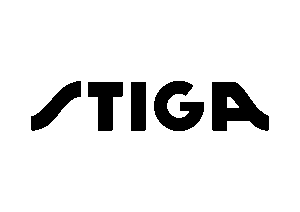
STIGA drives supplier engagement and strengthens supply chain transparency with Sedex
STIGA, a multinational leader in gardening equipment, headquartered in Treviso, Italy. The company operates two production sites in Slovakia and China and manages 15 sales branches across Europe. With Sustainability, Process improvement, and Purchasing teams collaborating closely, STIGA set out to strengthen supplier engagement and build a more transparent and responsible supply chain.
The Challenge
Before joining Sedex, STIGA lacked a structured approach to assessing social and ethical risks in its supply chain. While processes for managing supplier relationships were in place, there was limited visibility into issues such as labour rights, working conditions, health and safety, and fair wages.
This gap exposed the business to potential compliance risks that could affect:
- its reputation
- supply chain stability
- long-term sustainability goals
Without clear insights, mitigating risks and ensuring responsible sourcing was a major challenge.
The Solution
Sedex became STIGA’s first structured tool for a 360° supplier assessment. The platform provided a framework to analyse social, environmental, and ethical risks – issues that had not been systematically addressed before.
“By incorporating the Sedex rating into our overall supplier assessments, we now have a more comprehensive view that includes social factors such as labour rights, working conditions, and ethical sourcing.”
STIGA selected Sedex specifically for its reliability of judgement, ability to deliver strong value, and balance between quality and efficiency. The Supplier Engagement service supported the onboarding process, while the Risk Assessment tool provided an overview of supplier criticality and sector performance. By assessing potential partners and considering risks and opportunities in supplier evaluation, Sedex proved to be a trusted and value-adding partner.
Sedex’s risk-based approach, combined with its Supplier Engagement campaign, simplified onboarding and ensured focus on the suppliers with the greatest impact and the most significant risks and opportunities. To initiate the project, STIGA prioritised its top 100 suppliers by purchase volume, representing the largest share of procurement activities and posing the greatest potential for both risk and value creation.
Focusing on these high-impact suppliers allowed STIGA to strengthen its evaluation process, mitigate risks, and build more responsible and resilient business relationships.
The project was rolled out in three waves over the course of one year:
- Wave 1: The largest phase, with 100 sites. STIGA onboarded 62% of suppliers, making significant progress toward engaging their broader supply chain.
- Wave 2: Focused on 47 suppliers, including new ones and those from Wave 1 not yet onboarded. This wave achieved a 71% onboarding rate.
- Wave 3: The smallest phase, covering 13 sites. By week 12, 90% of suppliers were successfully onboarded.
“This enhanced evaluation process helps us make more informed decisions, mitigate risks proactively, and strengthen our commitment to responsible business practices – ultimately supporting sustainable growth and supplier resilience.”
As a result of this three-wave strategy, STIGA onboarded most of its key suppliers onto Sedex, enhancing supply chain transparency and strengthening its commitment to ethical sourcing and sustainability. Once suppliers were onboarded, the self-assessment process was rolled out, allowing them to share detailed insights into their social, ethical, and sustainability practices. This enabled STIGA to evaluate risks more effectively and identify areas for improvement.
“By taking a systematic approach, we ensured a smooth transition into a more transparent and responsible supplier management framework.”
The Results
“Working with Sedex enabled us to conduct an initial mapping of our supply chain, providing valuable visibility into our supplier network. Through this process, we were able to identify the areas of greatest risk for each registered supplier. This foundational insight has been instrumental in helping us assess supplier compliance, prioritise areas for improvement, and strengthen our overall approach to responsible sourcing.”
By mapping their supply chain, STIGA gained a clearer understanding of where to focus their efforts. This has allowed them to take a more strategic approach in supporting and developing key suppliers, ensuring they meet their sustainability and ethical sourcing standards. As a result, they are now able to build a stronger, more resilient supply chain that aligns with their long-term business goals.
The most significant improvement STIGA has seen: “our knowledge and awareness of supplier risks and compliance levels. This enhanced understanding allows us to make more informed decisions, proactively address potential challenges, and establish stronger partnerships with suppliers who align with our values and objectives.”
“The improved visibility into our supply chain and supplier risk mapping has laid a strong foundation for future improvements and strategic decision-making.”
The Impact
Which specific teams, roles or departments have benefited most from the use of Sedex?
The Sustainability Department, Process Improvement Team, and the Purchasing Department have seen the most direct benefits from using Sedex.
One aspects of Sedex solution that was most relevant to STIGA’s business model has been the Risk assessment tool . As it provides a clear overview of suppliers’ criticality and their performance across different market sectors, enabling the company to prioritise suppliers that require the most attention. This tool has proven to be invaluable in identifying high-risk suppliers and focusing efforts on those who are most aligned with STIGA’s ethical and sustainability standards. It has also allowed STIGA to address potential risks earlier, preventing disruptions in the supply chain.
The Conclusion
For organisations facing similar challenges in supplier engagement, early implementation of a solution like Sedex can offer significant advantages, particularly in terms of supplier awareness and risk mitigation. STIGA recommends that companies also focus heavily on training and awareness-raising, both internally and externally with suppliers. It’s crucial to ensure that all stakeholders understand the platform’s features and how to effectively manage and address issues that arise. Sedex helps building this internal and external knowledge base, and supports companies upskill their employees and improving their overall efficiency in onboarding suppliers and enhance long-term supplier relationships.
Ready to transform your supply chain?
For organisations looking to replicate STIGA’s success, the next steps should include beginning with a comprehensive self-assessment to identify the most critical suppliers within their network. Once this assessment is complete, companies should develop a structured audit plan that targets those suppliers who pose the highest risk to their business. Following up with regular audits, supplier support, and ongoing training will further strengthen supplier relationships and ensure that the entire supply chain is aligned with ethical and sustainability standards. The key is to make supplier engagement a continuous process, not a one-time event.
Contact our team today to request a demo tailored to your industry.


